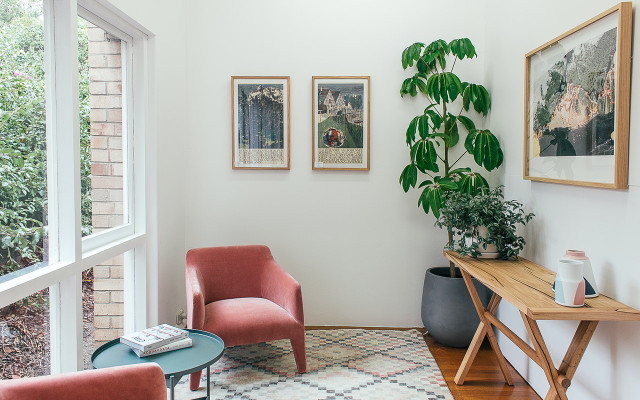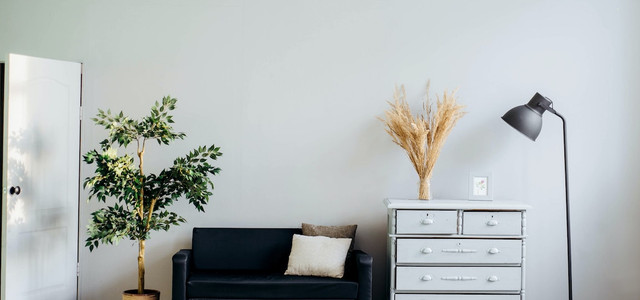Japandi is a beautiful blend of the Japanese and Scandinavian interior design styles. We’ll explain what distinguishes the style and how to sustainably implement it in your home.
The term “Japandi” is a portmanteau of Japanese-Scandinavian and refers to an interior design style. It combines the minimalist and hygge style from Scandinavia with the understated aesthetics of Japan. The idea is to reduce the interior to the essentials, while creating a warm and cozy atmosphere at the same time. The following features are typical of the Japandi style:
- simple, organic shapes
- light colors with dark accents
- natural materials
- discreet decoration
- delicate and timeless pieces of furniture
While at first glance the two design styles could not be more different, they actually harmonize beautifully in practice. The reason for this is the Wabi-Sabi concept from Zen Buddhism, which underlies the style. According to this concept, the viewer’s attention should be drawn to the beauty in the imperfection and incompleteness in the room. Each individual object in the room is then better appreciated.
Characterizing Features of Japandi Style

To get a better idea of the Japandi style, we will give you some specific examples of suitable colors, materials, pieces of furniture, and decorative items that characterize this interior style.
- Colors: the mixture of light shades with dark accents is typical for Japandi style. The light and subtle shades of white, green, blue, cream, pink, and sand colors that are associated with Scandinavian style, are combined with the darker colors such as black, gray, or beige, which characterize the Japanese style.
- Materials: primarily high-quality materials that can be used for many years like furniture made of solid wood, as well as natural textiles, such as wool, linen, or jute. Keep in mind, the use of textiles should provide a warm and hygge feeling.
- Furniture Pieces: usually simple, delicate, and timeless. Some may favor the typical Japanese low and floor furniture, such as futons, while others may lean more towards the functional, Scandinavian design.
- Decorative Items: consciously choose the decoration. Furnishings should not appear cluttered – empty corners are a natural part of the Japandi style. Each individual piece, especially decorative items, should be appreciated. In this way, you can make it your own: use items that are special and beautiful to you.
How to Implement Japandi Sustainably



If you want to furnish your own home in the Japandi style, pay attention to sustainability. Staying true to the uncrowded nature of Japandi, only buy the items you actually need. By doing so, you’ll also benefit the environment. Here are tips on how to combine Japandi and sustainability:
- Materials: there is great emphasis placed on simple, high-quality furniture. When it comes to furniture, the higher the quality, the more durable it usually is. As a rule, the pieces of furniture tend to have muted colors – this is due to the use of natural materials such as linen or cotton.
- Label: If you want to buy new furniture, shop local. The FSC Label is also important, as it guarantees the product comes from sustainable timber management.
- Second Hand: for the sake of the environment, it is worthwhile to use second-hand furniture from flea markets, thrift stores, or Craigslist. Not only is it cheaper, buying second-hand also keeps things out of the landfills.
- DIY Decorations: while many of the decorative items in a Japandi set-up are made from natural materials, you don’t have to buy these items new. Instead, give your decor a personal touch by upcycling old textiles. Use cotton scraps to sew matching pillows, knit potholders for your home, or make your own candles.
This article has been translated from German by Karen Stankiewicz. You can find the original here: Japandi: Das ist der japanisch-skandinavische Einrichtungsstil.
** Links to retailers marked with ** or underlined orange are partially partner links: If you buy here, you actively support Utopia.org, because we will receive a small part of the sales proceeds. More info.Do you like this post?






